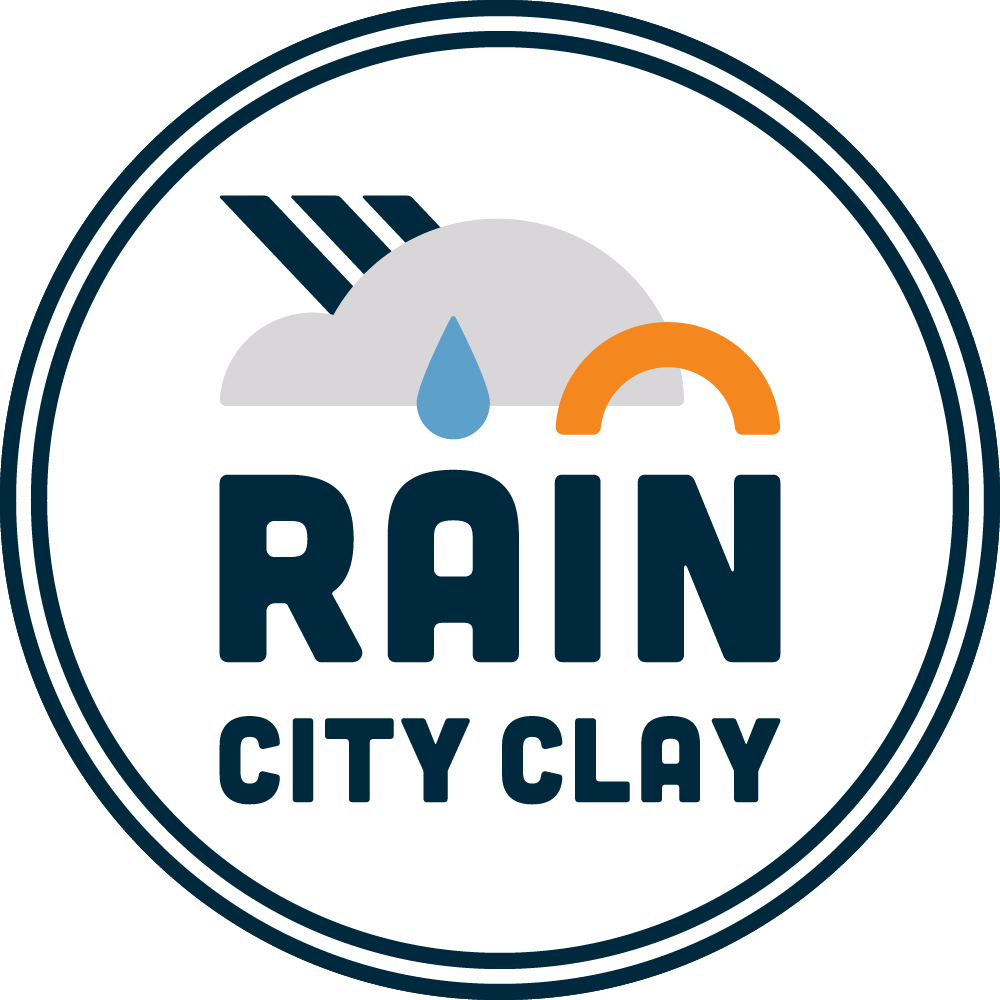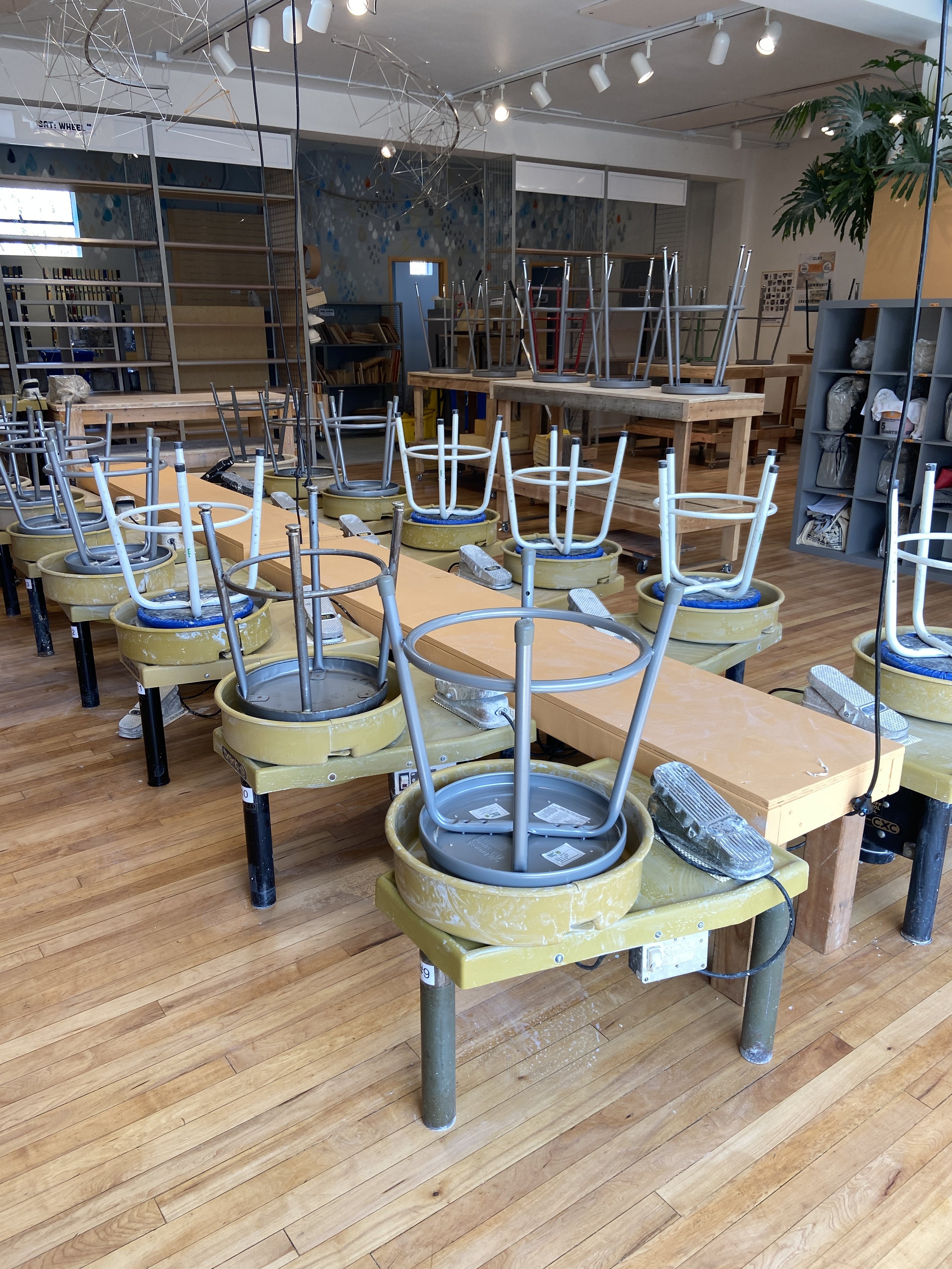Certification For Firing Gas Kilns
By choosing to fire kilns at RCC, you are responsible for the facility and artwork in the kiln
And you are responsible to communicate any challenges to Deb.
If you would like to fire the gas kiln, please follow these steps.
Have a new and full conversation with Deb about your kiln firing experience.
Participate in a FULL class firing.
This means that you will be at a kiln lighting, help with hourly turn-ups (each hour to ½ hour), and be at a kiln shut off. To help fit it into your schedule these tasks can be done on two different firings = first ½ of one firing, and second ½ of another class firing (or all in one firing)Potentially participate in a 2nd firing depending on your ability to understand kiln turnups and make them on your own.
Practice lighting the kiln and shutting off the kiln with Deb.
(on your own with Deb watching)Have Deb on notice when you are firing your first kiln at RCC
The gas kiln is a fire hazard, and experience is needed throughout the firing. You must have signed the firing waiver and have Deb’s permission to be a LEAD on the gas kiln.
As the kiln firer, YOU are the kiln’s safety system. There are many stories of ceramics studios burning down because of kiln problems. Always make conservative decisions and stay attentive to the kiln. The kiln is most prone to go out at the beginning of the firing. When the burners are candling, they can be blown out by the wind, or shifts in gas pressure can affect this too. You need to check the kiln regularly (every 15 minutes) early on in the firing just to make sure all the burners are on. Take note of weather conditions and if it is breezy, check more often.
If a burner goes out, gas builds up in the kiln. When it is reignited, it can damage the kiln, the work inside, the furniture, or in a worst-case scenario create a fire. Once the kiln has reached red heat if a burner went out (in most cases) the heat of the kiln would reignite it quickly.
Turn-ups to the gas need to be made in reaction to the increase in heat over time, the multimeter, the desired outcome, and looking at past kiln logs.
Kiln COOLING
Shut the damper after the firing has been completed, and take care not to rush the kiln in the cooling process. This can cause damage to the work, as well as the kiln shelves. Crack the door open when the kiln is no hotter than 400ºF according to a pyrometer/multimeter.
The first “cracking of the kiln” should be a ¼” gap in the door. The damper should remain closed to prevent a cold draft from moving through the kiln. The advancer shelves are prone to cracking with fast temperature changes and so are the ceramics.
Any kiln shelves that crack or break as a result of poor handling will be the kiln lead’s responsibility to replace.
Kiln LEADERSHIP
The person signing out the kiln is considered the LEAD of the kiln and is responsible for the firing. This includes the kiln shelves, the work in the kiln, the building, and the studio as a whole. It is a big responsibility to take on a gas kiln firing. The LEAD of the kiln must ensure that there is a person with the kiln available to check the kiln every hour. The kiln may never be unattended. Staff may not be leaned on to check the kiln. You need to fire the kiln when you are not on shift. The leader of the kiln is responsible for making sure payment is made for the firing.
Those who are signed out for a kiln are responsible for washing the kiln shelves, scraping rough spots off of the posts, and returning the equipment to its proper place. An hourly kiln log must be kept and shared with RCC.
To reserve a Gas Kiln
Designate a kiln leader
Kiln leader checks in with the office to coordinate dates around class firings
Kiln leader coordinates payment for the firing
Kiln leader makes the payment for the kiln before the firing (via PayPal)
Kiln leader is certified to fire the kiln
Kiln leader is responsible for keeping the firing, cooling, and unloading on schedule
Kiln leader is responsible for communication within the group and to the office
Each person on a shift firing the kiln must be certified by RCC
Gas Kiln Prices as of 1/20/23 (This does not include damage to shelves)
Bisque $125
Glaze C/6 $145
Glaze C/10 $175
Kiln Firing Expectations
Always be attentive to the kiln. Follow the direction of the kiln leader
Never leave the kiln unattended by a certifiied kiln firing crew member
Leave nothing flammable leaning on or around the kiln
Make sure all gas levers are closed before lighting the kiln
Ensure the kiln door and damper are open when lighting the kiln
Call if you need help - 206-673-6454
Wear protective gloves and goggles when checking the kiln
Report broken kiln furniture
Put the multimeter away immediately after finishing the firing
Clean all the kiln furniture immediately after unloading the kiln
By choosing to fire kilns at RCC, you are responsible for the facility and artwork in the kiln
And you are responsible to communicate any challenges to Deb.

